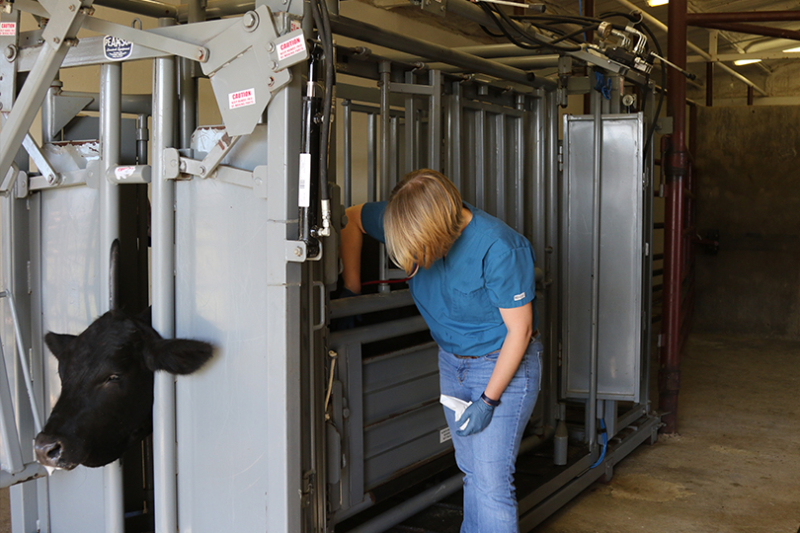A shortage of rural veterinarians in Texas prompted a collaborative pilot effort between the Institute for Infectious Animal Diseases and the Texas A&M School of Veterinary Medicine and Biomedical Sciences.
The pilot effort aims to enhance recruitment of veterinarians to critically underserved areas of Texas.
The project is funded by a U.S. Department of Agriculture (USDA) National Institute of Food and Agriculture grant and projected to last over three years. Texas Farm Bureau submitted a letter of support for the project and grant funds.
“What we are trying to do is create a community template of recruiting (options) intended for use by communities that need a veterinarian and want to help attract one to their area,” Dee Ellis, DVM, and Texas A&M AgriLife Research veterinarian and part of the Texas A&M College of Agriculture and Life Sciences Department of Entomology, said.
It helps communities show what incentives can be offered to veterinarians to help them relocate to the area, Ellis said.
The recruitment pilot includes Ellis, Dan Posey, DVM, clinical professor at the Texas A&M School of Veterinary Medicine & Biomedical Sciences who leads outreach efforts within the school’s Veterinary Education, Research and Outreach initiative in Canyon, and Jennifer Schleining, DVM, Diplomate of the American College of Veterinary Surgeons, ACVS-LA, head of the Department of Large Animal Clinic Sciences at the Texas A&M School of Veterinary Medicine & Biomedical Sciences.
“The ultimate goal of this grant is to help communities help themselves and be able to attract, recruit and retain veterinarians,” Schleining said. “In a lot of small communities, the veterinarian is also highly involved in driving the economy and is seen as a leader. So, it’s really an important part of the whole community atmosphere to have a veterinarian located there. We’re thankful to the USDA for recognizing that this is a much larger issue than just training and that they’re giving us the tools to be able to address it from a multifaceted approach.”
Ellis noted Texas has both state and federally funded programs to help repay part of a veterinarian’s student loan debt if they relocate to an underserved area. This project will not replace the programs already in place.
“In the federal program, the Texas Animal Health Commission, with industry input, selects the areas each year that are designated as ‘underserved’ and then USDA reviews the applications of veterinarians to see who will actually receive a loan repayment stipend,” he said.
The project is intended for small towns or communities that need a veterinarian but also could be used by agribusinesses or other stakeholders to entice veterinarians to underserved parts of the state, Ellis said.
The recruitment project can share the salary and areas of attraction—including schools and recreational opportunities—in each community.
“This embraces the ‘it takes a village mindset’ to recruit veterinarians to historically underserved areas,” Ellis said. “It’s not just about a community providing housing or inexpensive locations for a clinic to set up at an industrial park, but how can the community work with the veterinary professionals and local agribusiness to offer a desirable environment for a veterinarian to relocate to.”
This could help with retention of veterinarians in small towns.
“When you look at the rural dilemma, there are rural towns that are getting smaller, but there are also rural towns that are getting bigger,” Posey said. “Part of what we aim to find out is why.”
The recruitment project will help communities understand how they can grow and attract young professionals, he said.
“By doing this work, we can see why some rural communities, like Canyon in the Texas Panhandle, thrive and others don’t. Once we’ve identified these things, we’ll make a ‘toolbox’ to help rural areas that are shrinking start thriving again so that they can attract veterinarians. The toolbox will serve as a blueprint to help build stronger attractions for young professionals to rural areas,” Posey said.


Leave A Comment